Comb jelly belongs to the phylum ctenophore, containing specific invertebrate animals of the marine habitat found in different parts across the globe. The characteristic feature of the members of this group is the presence of ciliated plates which appear as tiny combs – hence the name comb jelly. These cilia help the organism swim.
Here are more comb jelly facts related to its physical appearance, eating habits, habitats and behavior.
Physical Traits
As the name suggests, the organism consists of a jelly-like body. Other characteristic physical traits are described below.
- The body of a comb jelly can be spherical or oval shaped.
- Ninety-five percent of the body consists of water over which stretches a thin layer of skin. No bones or hard shell cover are found.
- A comb jelly is transparent and has iridescent color bands made of cilia.
- The cilia are arranged radially on the organism’s body in eight rows. Therefore, the body is divided into eight symmetrical regions.
- It is a simple organism. Two distinct body parts can be identified – an oral pole which consists of a mouth and an aboral pole which contains a special sense organ known as the statocyst.
- The size of the animal varies according to species. For instance, the sea walnut grows up to 4.7 inches. On the other hand, Cestus veneris – the largest known comb jelly – can grow up to 150 centimeters.
Diet and Eating Habits
Comb jellies are carnivores. The main component of their diet is different types of sea jellies, eggs and larvae of other marine fish, copepods as well as other comb jellies. The following facts explain their eating habits.
- Comb jellies are able to detect chemical traces in the surrounding water which helps them find food.
- It catches prey – such as zooplankton – by continuously pumping water into the body.
- Adhesive cells, called colloblasts, are found on the tentacles of the comb jelly. These cells help in catching and trapping prey before transferring it to the mouth.
- Specialized ciliated structures found in the mouth of the organism help it bite off prey even if it is much larger in size.
- Its stomach can be expanded to accommodate the ingested food. At a time, a comb jelly can hold prey as large as half of its own size in its stomach.
Habitat
Comb jellies reside in salt waters all over the world. They prefer bays and estuaries. They are mostly found in waters with a low content of oxygen and a high population density. The organism stays near the surface of the water but moves deeper during times when the sea is rough. Endemic to North and South America, the organism is also found as an invasive species in a variety of other regions including the Black Sea, the Aegean Sea as well as the southern and northern Baltic Seas.
Overall, different species of comb jellies are found widely all over the marine kingdom in both shallow as well as deep waters.
Adaptive Behavior
Among other interesting comb jelly facts is their impressive adaptive behavior which greatly enhances their survival chances in their marine habitat. The organism adapts the environment in the following ways.
- It shows considerable tolerance to a wide range of water conditions such as temperature and salinity. It can also survive in polluted waters to a certain extent.
- The animal can bring about a reduction in its body size as well as metabolic rate to deal with the shortage of food. In this way, by reducing its food requirement, a comb jelly is able to survive for three whole weeks with a limited supply of food.
- It is a hermaphrodite and is capable of self-fertilization. Therefore, in case of displacement of an individual, an entirely new population can arise in a non-native habitat to ensure the survival of the displaced species.
Fun Facts
Here are some random comb jelly facts for fun.
- The entire marine world contains more than ten thousand species of comb jelly.
- These simple organisms contain no heart, brain, eyes or other specialized organs found in various well-developed animals.
- The organism’s statocyst is a sensory organ which helps it maintain equilibrium in water.
- It is a food delicacy in China.
- Mnemiopsis leidyi is a particular species of comb jelly which never stops feeding as long as food is available.
- Unlike other sea jellies, a comb jelly does not sting.
- The rows of cilia on the body of a comb jelly diffract light in water as the organism swims. This produces an interesting and attractive rainbow effect.
- The animal does not stay intact outside water. Its body breaks apart when it is taken out of the water.
- Some species of comb jelly – for instance the Venus Girdle – can glow with phosphorescent light at night.
- Although most comb jellies are hermaphrodites and reproduce sexually, some species are also capable of asexual reproduction.
- The organism gains sexual maturity quite rapidly. Some species can start reproducing only two weeks after hatching from the egg.
Do you find this article interesting and informative? If yes, how much? Also, give your precious suggestions to improve it further.
Latest Fish
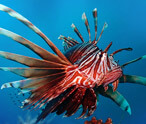
Lionfish Facts
Lionfish is a chordate which belongs to the family...read more
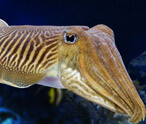
Cuttlefish Facts
Cuttlefish is a mollusk which belongs to the class...read more

Octopus Facts
Do you know how, in the floor of an ocean, an octopus...read more

Sea Urchin Facts
Sea urchins are tiny water creatures found in oceans...read more
Latest Birds
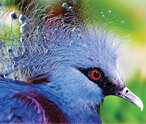
Victoria Crowned Pigeon
With its name...read more
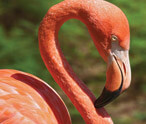
Information About Flamingos
Flamingos are...read more
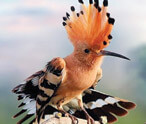
Hoopoe Bird
Famous for its distinctive crown of...read more
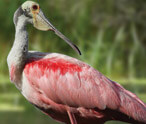
Roseate Spoonbill
The beautiful Roseate Spoonbill...read more






















Largest Birds of Prey in the World by Size and Weight
Also called raptors, the birds...
List of Birds That Fly in V Formation
Did you ever feast your eyes on the amazing phenomenon...
Birds of Prey List
A bird of prey is also known as a raptor or a hunter. It belongs to the group of...
Millipedes Vs Centipedes
Centipedes and millipedes are both arthropods from the group...
Difference Between Warm Blooded and Cold Blooded Animals
Every living organism...
Top 10 Extremely Dangerous Insects
The insects have been grouped in class 'insecta' of...
Sheep Vs Goat
The goat and the sheep are related to each other through the same family. They...
Animals with Blue-colored Blood
Humans and other vertebrates have red-colored blood running...
Birds, Mammals And Reptiles
Before coming to the question of common ancestry of birds...